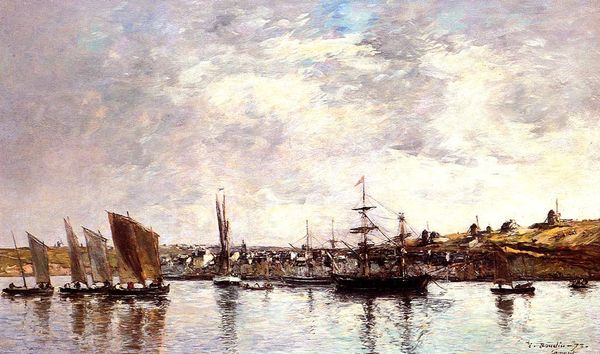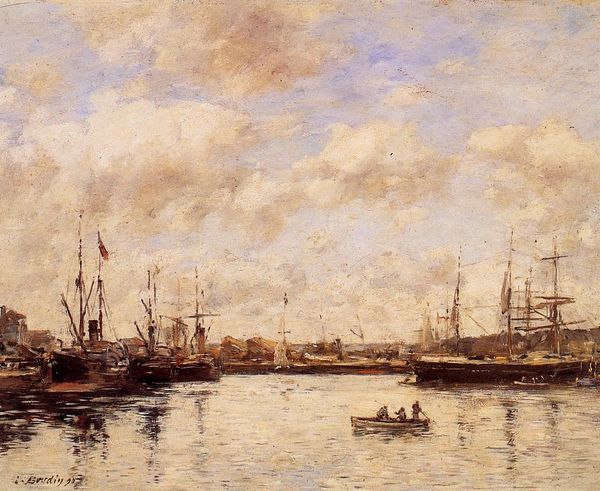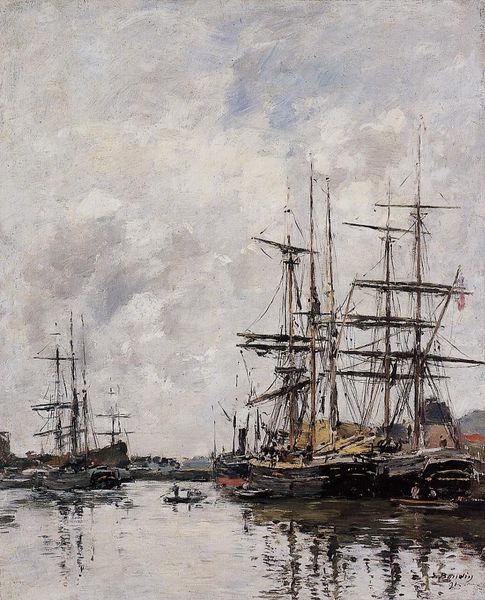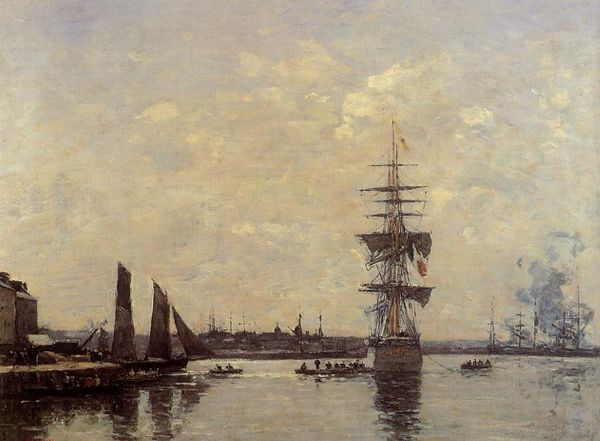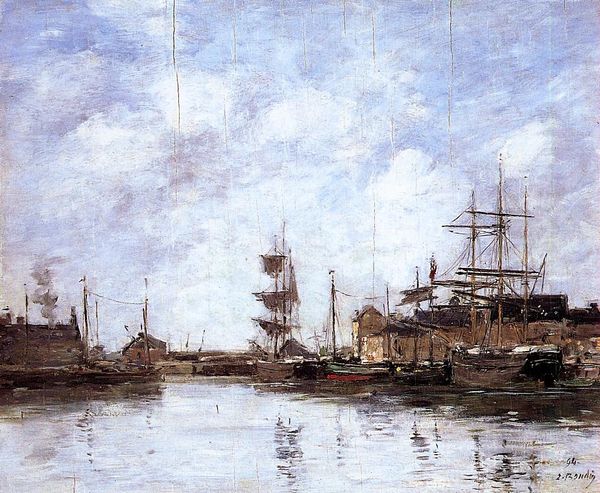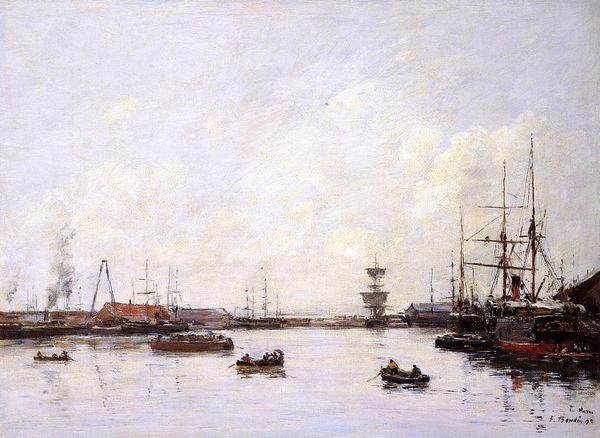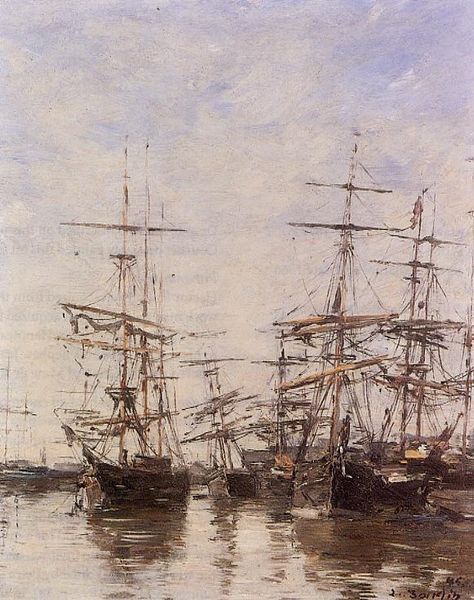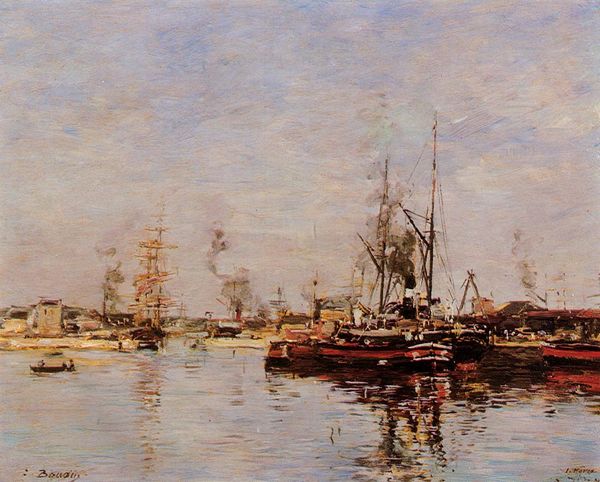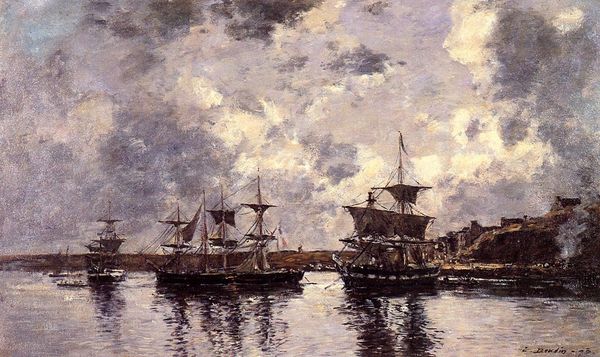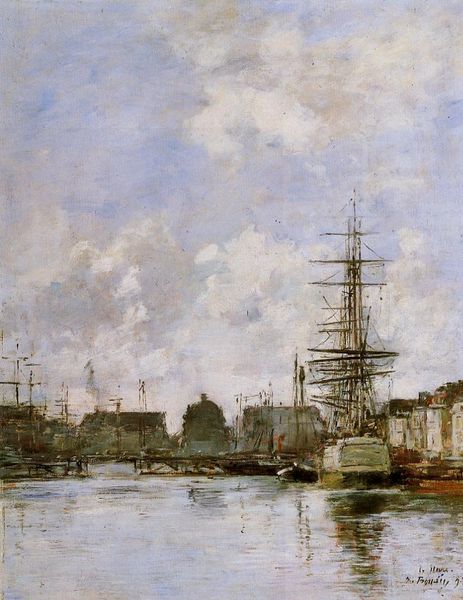
Copyright: Public domain
Eugène Boudin painted this oil on canvas, entitled 'Deauville, Norwegian Three-Master Leaving Port', in 1867. The image evokes a sense of bustling maritime activity. The presence of a Norwegian vessel in a French port points to the increasing internationalisation of trade and travel in the mid-19th century. Boudin's choice of subject matter and style reflects the changing social and economic landscape of France at this time. As France underwent rapid industrialisation, artists like Boudin turned to scenes of modern life for inspiration. Deauville, as a growing port city, became a symbol of progress and commerce. The loose brushwork and emphasis on capturing the fleeting effects of light and atmosphere align with the emerging Impressionist aesthetic. This new style challenged the established conventions of academic painting, reflecting a broader shift towards individualism and experimentation in the art world. By studying archival records, trade statistics, and artistic manifestos, we can gain a deeper understanding of the cultural forces that shaped Boudin's work and its place in art history.
Comments
No comments
Be the first to comment and join the conversation on the ultimate creative platform.
